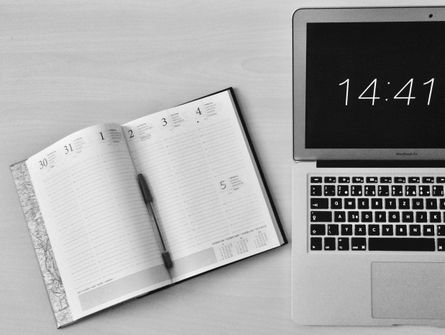
How Women with ADHD Can Manage Relationships: Effective Communication and Conflict Resolution
For women with ADHD, navigating relationships—whether romantic or platonic—can present unique challenges. ADHD symptoms like distraction, impulsivity,...

Journaling is a versatile and powerful tool for enhancing emotional clarity, reducing stress, and improving mental health. For women, who often manage various roles and emotional demands, journaling can be a game-changer. But traditional journaling isn’t the only way—creative methods like visual journaling, gratitude mapping, and stream-of-consciousness writing offer new ways to tap into your emotions and well-being.
Let’s explore how these techniques can provide healing and emotional insight, backed by science.

Journaling works by engaging different parts of the brain, helping you organize thoughts, release emotions, and make sense of experiences. It promotes emotional regulation and lowers stress by turning chaotic thoughts into a more structured, manageable format. Research from Cambridge University Press shows that expressive writing can improve mood, lower anxiety, and even boost immune function.
For those who feel more comfortable with visuals than words, visual journaling is a fantastic way to express feelings without having to find the right language. It’s a blend of creativity and therapy, ideal for capturing emotions through drawing, painting, or collages.
How to Begin: Start by using colors or images that represent your mood or emotional state. Whether you’re sketching a scene or creating a collage from magazines, visual journaling gives your feelings a creative outlet.
Move beyond the classic gratitude list with gratitude mapping, a visual way to record and celebrate the positive aspects of your life. By creating a “map” of the things you’re grateful for, you focus on different areas—like health, relationships, or career—and draw connections between them.
Getting Started: Use your journal to draw a “map” of things you’re grateful for. You can create different categories, like “Family,” “Career,” or “Self-Care,” and add in what makes you feel blessed in each area.

If you’ve ever felt like you have too much going on in your head, stream-of-consciousness writing can help. This technique involves writing continuously for a set amount of time, without worrying about grammar or structure. The goal is to get your thoughts onto the page as quickly as possible.
Try This: Set a timer for 10 or 15 minutes and write non-stop. Don’t worry about punctuation or coherence—just let the words flow. You might be surprised at what surfaces!
Short on time or energy? One-line-a-day journaling is perfect for those who want to maintain a habit but don’t feel up for lengthy entries. By capturing just one sentence a day, you can reflect on your emotions, record a highlight, or summarize how you’re feeling in a simple, yet effective way.
How to Start: Keep a small journal and write one sentence at the end of each day. This practice can be done in under a minute but will have long-lasting emotional benefits.
When emotions run high or situations feel unresolved, writing letters in a letter-writing journal can provide closure without ever sending them. This method allows you to express feelings toward a person or situation, even if they’re not physically present in your life anymore.
How to Begin: The next time you’re feeling emotional about a person or situation, write a letter in your journal. It could be to a past friend, a loved one, or even a part of yourself. The act of writing can help release the burden you may be carrying.
Q: How does journaling help with stress and emotional clarity?
A: Journaling provides an outlet to process thoughts and emotions, helping to reduce stress and bring clarity. By writing things down, you organize your thoughts, making it easier to work through complex emotions. According to research, journaling has been shown to lower cortisol levels, the stress hormone, and improve emotional regulation.
Q: Can journaling improve mental health for women?
A: Yes, journaling can be particularly beneficial for women who may face unique emotional challenges or pressures. Techniques like gratitude mapping and stream-of-consciousness writing can promote emotional resilience, improve mood, and enhance self-awareness. Journaling has also been found to be effective in managing anxiety and depression.
Q: What are some creative journaling techniques I can try if traditional journaling doesn’t work for me?
A: If traditional writing feels restrictive, try visual journaling, which involves drawing or creating collages to express emotions. You can also try one-line-a-day journaling if you’re short on time, or letter writing, where you write unsent letters to process unresolved emotions. Each method offers a unique way to explore feelings in a way that feels right for you.
Q: How often should I journal to experience the benefits?
A: There’s no strict rule, but consistency is key. Whether it’s a few times a week or daily, journaling regularly will help you build a habit of self-reflection. Even just writing for a few minutes a day can lead to noticeable improvements in mood and emotional clarity.
Q: Can journaling help with specific emotional struggles like grief or anxiety?
A: Absolutely. Journaling has been shown to be effective in processing grief, managing anxiety, and working through difficult emotions. Techniques like letter writing can be especially helpful in finding closure or processing loss.
The information provided in this article is intended for educational purposes only and should not be considered a substitute for professional medical advice or therapy. Always consult a healthcare provider or licensed therapist for advice tailored to your individual emotional or mental health needs. While journaling can be a useful tool for managing stress and improving mental clarity, it is not a replacement for medical care or therapy in the treatment of serious mental health conditions. Individual results may vary.
Journaling offers a powerful way to connect with your emotions, reduce stress, and gain clarity—especially when using creative methods like visual journaling or gratitude mapping. Whether you’re tackling difficult emotions or just trying to stay grounded, journaling can become your safe space for self-discovery and healing. There’s no right or wrong way to do it—the key is finding what works best for you.
Take the First Step: Try one of these techniques this week and see how it makes you feel. Whether it’s capturing feelings through art, mapping out your gratitude, or writing a heartfelt letter, journaling offers a unique path to emotional wellness.

For women with ADHD, navigating relationships—whether romantic or platonic—can present unique challenges. ADHD symptoms like distraction, impulsivity,...

Managing time can be a challenge for anyone, but for women with ADHD, time management often feels like an insurmountable task. ADHD can make it diffic...

Relationships—whether romantic, familial, or friendships—are central to our emotional well-being. But navigating these relationships can sometimes fee...

For many women, trauma is a deeply personal experience that can impact emotional well-being, relationships, and overall quality of life. From childhoo...

Career-related stress is something most women face at some point in their professional lives. The balancing act between personal and professional resp...